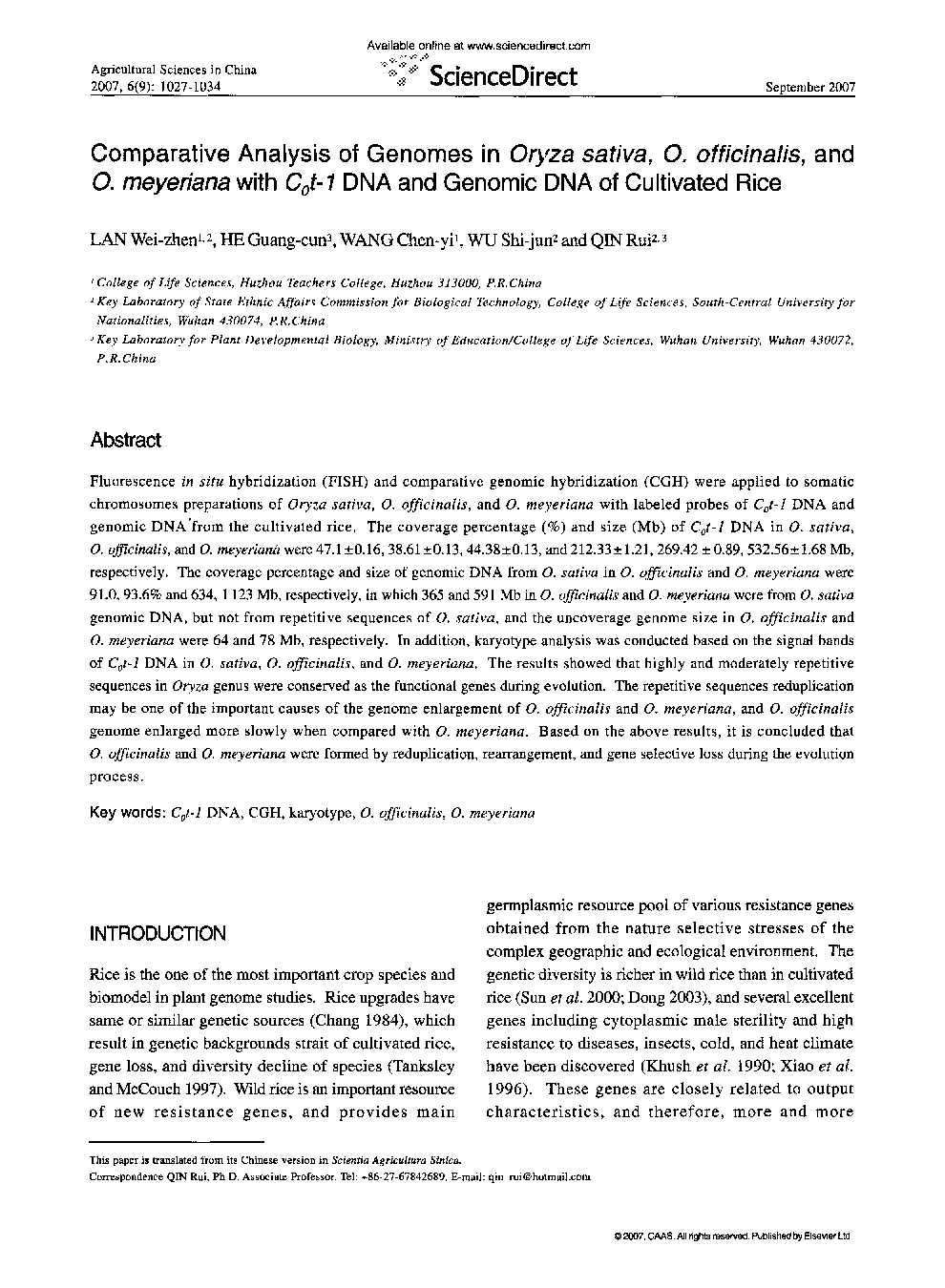| Article ID | Journal | Published Year | Pages | File Type |
|---|---|---|---|---|
| 4490752 | Agricultural Sciences in China | 2007 | 8 Pages |
Fluorescence in situ hybridization (FISH) and comparative genomic hybridization (CGH) were applied to somatic chromosomes preparations of Oryza sativa, O. officinalis, and O. meyeriana with labeled probes of C0t-1 DNA and genomic DNA from the cultivated rice. The coverage percentage (%) and size (Mb) of C0t-1 DNA in O. sativa, O. officinalis, and O. meyeriana were 47.1 ± 0.16, 38.61 ± 0.13, 44.38 ± 0.13, and 212.33 ± 1.21, 269.42 ± 0.89, 532.56 ± 1.68 Mb, respectively. The coverage percentage and size of genomic DNA from O. sativa in O. officinalis and O. meyeriana were 91.0, 93.6% and 634, 1123 Mb, respectively, in which 365 and 591 Mb in O. officinalis and O. meyeriana were from O. sativa genomic DNA, but not from repetitive sequences of O. sativa, and the uncoverage genome size in O. officinalis and O. meyeriana were 64 and 78 Mb, respectively. In addition, karyotype analysis was conducted based on the signal bands of C0t-1 DNA in O. sativa, O. officinalis, and O. meyeriana. The results showed that highly and moderately repetitive sequences in Oryza genus were conserved as the functional genes during evolution. The repetitive sequences reduplication may be one of the important causes of the genome enlargement of O. officinalis and O. meyeriana, and O. officinalis genome enlarged more slowly when compared with O. meyeriana. Based on the above results, it is concluded that O. officinalis and O. meyeriana were formed by reduplication, rearrangement, and gene selective loss during the evolution process.
